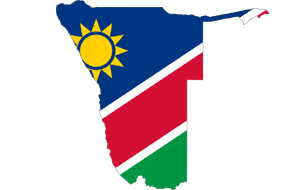Tower Resources Updates Activity Offshore Namibia
Friday, June 16, 2023
Tower Resources plc provided an update on activity in respect of license PEL 96 in Namibia, covering offshore blocks 1910A, 1911 and 1912B and, in particular, the recent basin modelling work undertaken over the license area. Tower is the operator of license PEL 96 with an 80% working interest.
Highlights
- A basin and thermal maturity study has been undertaken within PEL 96 which has significantly progressed the understanding of the hydrocarbon prospectivity of the license. This basin modelling study has been carefully integrated with seismic sequence stratigraphic interpretation of the large 2D seismic datasets and integrated with the well data within PEL96 and available well data elsewhere in the Walvis Basin region.
- The integrated analysis of the seismic, wells and the basin modelling results shows clear evidence of a working petroleum system present within the Dolphin Graben in PEL 96; in the form of oil recovered from cores in the 1911/15-1 well and direct hydrocarbon indicators (DHIs) observed on seismic.
- The objectives of the basin modelling study were to assess the critical elements of the hydrocarbon charging system, i.e. thermal maturity, distribution of generative source kitchens, volumetric estimation of generative capacity of mature source rocks, timing of generation/expulsion of hydrocarbons and mapping of migration pathways.
- Main conclusions of basin modelling study:
- Generative source kitchens have been calculated and have been mapped within PEL 96. Lower Cretaceous syn-rift sediments within the main depocenters of the Dolphin Graben calculate as mature for main oil and late oil generation.
- Timing of the main and late oil generation phases calculated to be mid-Tertiary (Oligocene) to present-day.
- Migration pathways for oil charge have been mapped and the main foci of migration identified. The volumes of hydrocarbons generated have been calculated for each source kitchen.
- The main fetch areas that are able to focus migration towards each of the main prospects are calculated as having potentially generated oil within the following volumetric ranges; Alpha Prospect fetch area – ca. 45 to 79 billion barrels (“bbls”) oil, Gamma Prospect fetch area – ca. 15 to 23 billion bbls oil.
- The potential for stratigraphic traps is recognized on the 2D seismic data where Cretaceous reservoir targets onlap onto highs along the western and eastern flanks of the Dolphin Graben. These potential stratigraphic traps are located directly on several of the main migration pathways out of the generative kitchens. These potential stratigraphic traps show similarities to the recent major discoveries in South Africa and Namibia.
- The Company is currently undertaking an oil seep analysis to accompany the basin modelling work, and a review of the existing volumetric data on the prospects and leads that have already been identified is underway.
Jeremy Asher, Tower’s Chairman and CEO, commented: “We are excited by the results of the basin modelling work and its indication of the prospectivity of Tower’s licenses in Namibia. It explains neatly the results of the Norsk Hydro well, the source of the lacustrine oil found within it, and the reasons why that oil found its way into that well and subsequently migrated away from it. The conclusions indicate the potential for either of the giant billion-barrel-plus structures in the West of the license to be charged; furthermore, the migration pathways, coupled with the recent impressive industry successes in drilling stratigraphic plays in the Orange Basin to the South, enhance our interest in the similar stratigraphic leads that we interpret on the flanks of the Alpha Prospect structure in particular. We look forward to updating investors further as our work progresses.”
The full release with additional background and graphics can be read here.
« GO BACK
You may also like
